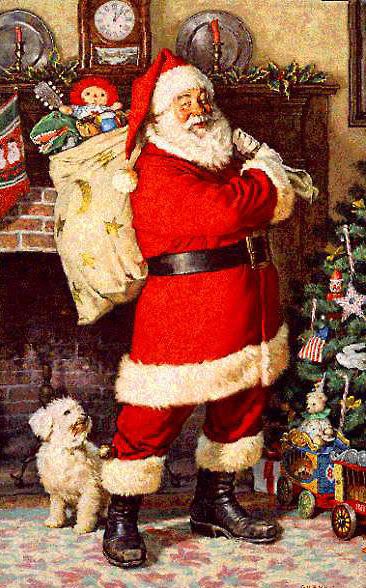
Although it is generally agreed that the Christmas tree in its current form came from Germany in the early 19th century, the tradition of decorating a tree to mark winter celebrations dates back hundreds of years to Roman times, when they used to decorate evergreen trees with small pieces of metal to celebrate Saturnalia.
In medieval times the 'Paradise Play' was performed every year on 24 December. This depicted the creation of Man and the fall of Adam and Eve from the Garden of Eden and always included an evergreen hung with apples which represented the apple tree of temptation.
The first mention of decorated trees being taken indoors came in 1605 in Germany - a country with a long Christmas tree history! The trees were initially decorated with fruit and sweets together with hand made objects such as quilled snowflakes and stars. German Christmas Markets began to sell shaped gingerbreads and wax ornaments which people bought as souvenirs of the fair and took home to hang on their tree.
Artificial trees were invented in the 1880's in a bid to try and stop some of the damage being caused to real trees due to people lopping the tip off large trees, thus preventing the trees from growing any further. It got so bad in Germany that laws had to be brought in to prevent people having more than one tree.
SAINT NICHOLAS

St Nicholas was a real person who was born to a wealthy family in Lycia, Asia Minor (now known as Turkey) sometime between 270 and 280 AD. He was orphaned at an early age and grew up in a monastery becoming one of the youngest priests ever at the age of 17. He travelled to Palestine and Egypt before returning to Lycia to become Bishop of Myra.
Nicholas was a very generous man, known for his charity and wisdom, who gave away his wealth to those in need. He would often go out at night, disguised in a hooded cloak, to leave gifts of money, clothing or food for the poor and underprivileged.
He died on 6 December 340 and was buried in the church in Myra. After his death he was canonised, becoming the patron saint of Greece, Russia, children, scholars, merchants, sailors and travellers.
In 1087 religious soldiers from Italy took the remains of St Nicholas back to Bari in southern Italy where they built a church in honour of him - the Basilica of San Nicola. This greatly increased his popularity in Europe, with pilgrims from all over the world coming to visit his shrine. Each of them took his legend back to their native countries where, as his fame spread, it took on the characteristics of each country. One thing remained common to all however, and that was the traditional image of the Bishop's mitre, long flowing robes, red cape and white beard.
There are many legends surrounding St Nicholas, the most famous of which tells how he gave bags of gold to three poor sisters for their dowries, throwing them down the chimney where they landed in some stockings which had been hung up by the fire to dry. This gave rise to the custom of giving gifts on his feast day (6 December), a practice which is still followed in the Netherlands and Germany where children leave their shoes out on St Nicholas Eve and hope that they will be filled with sweets and gifts the next morning. Elsewhere this has been incorporated into Christmas due to his identification with Santa Claus - a corruption of his Dutch name of 'Sinter Klaas'.
THE CHRISTMAS PUDDING

The origins of the Christmas pudding go back to the 14th century when a porridge called frumenty was made by boiling beef and mutton with raisins, currants, prunes, wines and spices. This was similar to a soup and was eaten as a fasting dish in preparation for the Christmas festivities.
By 1595 frumenty was beginning to evolve into plum pudding - it was thickened with eggs, breadcrumbs and dried fruit and was given more flavour by the addition of ale and spirits.
Over the years it became the customary Christmas dessert. However, with the arrival of the Puritans in 1664 it was banned as a lewd custom and its rich ingredients described as being 'unfit for God fearing people'
In 1714 plum pudding was restored to the Christmas table by George I who had tasted and enjoyed it, despite some objections by the Quakers.
By Victorian times, the plum pudding had evolved into something which looked similar to the Christmas puddings enjoyed by people today and it is now estimated that in the UK over 40 million people will finish their festive meal with a bit of Christmas pudding.
One of the many customs surrounding the Christmas pudding is that they should be made by the 25th Sunday after Trinity, prepared with 13 ingredients (to represent Jesus and his Disciples) and that every member of the family should take turns to stir the pudding from east to west with a wooden spoon, in honour of the three Kings.
Another custom is for silver coins to be put into the pudding mixture before it is baked - whoever finds it will have health, wealth and happiness for the coming year.